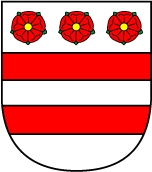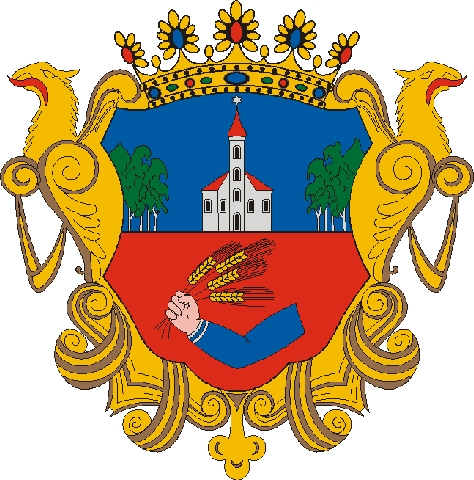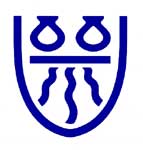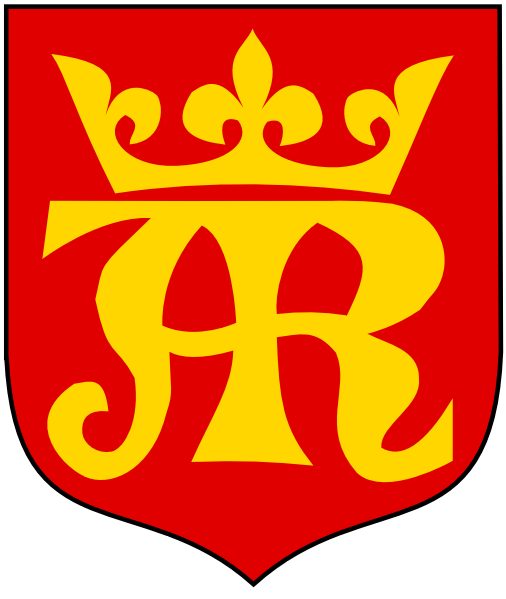PREŠOV (Slovakia)
 In 1997, 750 years expired from the first preserved written mention of Prešov, although the existence if that town is said to have been known before already. In the subsequent centuries the history of Prešov was affected both by wars, and influenced by calm and harmonic life, when the town created favourable conditions for the development of culture. Taking account of the geographic position of the town, it is significant that the cultures of several nations and nationalities met and permeated there – the Slovaks, Ruthenians, Ukrainians, Hungarians, Germans and Poles each of which brought its contribution to the common cultural treasury of the town.
In 1997, 750 years expired from the first preserved written mention of Prešov, although the existence if that town is said to have been known before already. In the subsequent centuries the history of Prešov was affected both by wars, and influenced by calm and harmonic life, when the town created favourable conditions for the development of culture. Taking account of the geographic position of the town, it is significant that the cultures of several nations and nationalities met and permeated there – the Slovaks, Ruthenians, Ukrainians, Hungarians, Germans and Poles each of which brought its contribution to the common cultural treasury of the town.
The present town Prešov is formed by four cadastral territories: Prešov, Nižná Šebastová, Šalgovík and Solivar, where approximately 93000 inhabitants live. For the needs of its inhabitants and visitors, apart from state administration, in the district town Prešov there is also the seat of the orthodox archbishop of the whole Slovakia and Bishop's authority of the Greek-Catholic Religion in Slovakia. In the centre of the Ruthenian and Ukrainian nationalities in Slovakia which Prešov is, there are the seats of different political parties and cultural organizations of those minorities.
At present, there is a wide traffic network in Prešov, extensive food industry (unique is the enterprise Solivary a.s.) and the fields of trade and services have witnessed extraordinary development in recent years that is connected with privatization.
Care is taken of the health of the inhabitants in four hospitals with polyclinics, in two retirements homes care is taken of the older generation, there is also an institute for the bodily affected youth and home for mothers with children there.
Long-term traditions in education are obvious at all levels of the system of education. From the twenty-two basic schools the pupils may progress to 37 secondary schools and subsequently to the University of Pavel Jozef Šafárik with five faculties – e.g., the philosophical faculty or the faculties of humanities and natural sciences. Technical education is provided by the Technical University in Košice with the seat in Prešov. Also language schools or schools of art belong to school facilities.
The inhabitants and visitors of Prešov have the possibility to use rich cultural offer that the town provides. Two permanent theatre scenes, new private puppet theatre and three cinemas, 10 libraries, Museum of Wines and Museum of Slovak Theatre Culture provide diverse scale of entertainment.
Sports activities are enabled by a large number of sports areas – football stadium, winter stadium, multi-purpose municipal hall, cycling velodrome, riding area, tennis courts – they serve both for recreational and top sport activities.
Serving for recreation of the inhabitants of the town is the Koloman Garden with the natural preserve Holá hora and a small zoo-part, municipal park in the centre of he historic centre, children park or in the suburban locality Sigor - Zlatá Baňa.
Partnership relations between Prešov and Prague 10 date since 1992 already and in the course of those years different contacts have been established.
In the recent four years the relations among basic and secondary schools develop the most in the form of active participation in sports events, international football and volleyball tournaments.
The links between the Czechs and Slovaks are lively all the time witnessing to which is the interest of the inhabitants of Prešov in the events in our Municipal Part. Many have their relatives there, some worked here and others simply like to return to Prague from time to time.
NYÍREGYHÁZA (Hungary)
 An inseparable part of the history of Hungary since the beginning of its settlement is – according to the sources of historians – the town Nyíregyhíza. The name itself consists of two words characterizing the origin of the habitated locality at that time. Nyír – it might mean fenland and egyháza a place with churches.
An inseparable part of the history of Hungary since the beginning of its settlement is – according to the sources of historians – the town Nyíregyhíza. The name itself consists of two words characterizing the origin of the habitated locality at that time. Nyír – it might mean fenland and egyháza a place with churches.
The ambitions of the town for independent management graduated its results and it tried to gain royal privileges which it also managed in 1837. Demarcated by it by the King were the competences of the municipal council, granted a coat-of-arms to the town and addressed the citizens to multiply masterly crafts. The town with 17 thousand inhabitants at that time took that challenge seriously. In 1858 the first train arrived to the railway station which played major role later in the fact that the town Nyíregyháza became a district town from 1876.
To the middle of the 19th century maintenance was provided to the inhabitants prevailingly by agriculture. At that time the decision was made to strengthen also the role of the trade field with making use of the railway and territorial location of the town. At the end of the 19th century district authorities established its seats there and in this spirit their clerks created the municipal spirit, there was a casino there, a theatre, museum, hospital and different companies.
At present we may say that Nyíregyháza is the eastern centre of the country. Its international importance is increased also by the fact that it neighbours with three borders – the Ukraine, Romania, the Slovak Republic and is connected with the modern railway network of Europe. The conception of the development of the town and district brings along large economy and, in parallel, becomes the centre of life of the health services, system of education and culture.
Agricultural products and the original environment of the region in Nyíregyháza put to the fist place the food industry with its conservation plants, processing firms of milk, crops, meat or tobacco fermentation. The use of other labour opportunities offers in the light industry of textile read-made clothes, production of shoes, processing of wood and production of paper. The town is ready for completion of settlement of industrial activities that will in the long term be considerate to the environment and, at the same time, is able to train the necessary quantity of labour force for it.
At the disposal of 120 thousand of inhabitants are 31 basic schools, 21 secondary schools and 3 institutes of higher level. Based on significant tradition is also the theological university, Roman-Catholic that has provided education for several years already in cooperation with the Roman University. During his personal visit in 1991 also the Pope Jan Paul II expressed his acknowledgement for the high standard of performed work.
Nyíregyháza disposes also of the richest collection of folk letters in Hungary that is located in the open-air museum Sostó Falu. An inseparable part of the cultural life of that town are also drama and musical theatres, choirs and orchestra ensembles and dance and ballet groups. The municipal sport centres of leisure time naturally develop and support sports activities of all types.
In the conception of the development of the town Nyíregyháza that is the eastern centre of Hungary is also the establishment of partnership relations among different towns. It is through sports activities of our schools that Municipal Part Prague 10 established contact with the management of the town hall in Nyíregyháza that showed an interest in closer cooperation and exchange of experience between our towns.
BALLERUP (Denmark)
 In 15 km to the north-west of the centre of the Danish capital Copenhagen, at the border of the town and the country there is Ballerup. The town has 45.000 of inhabitants and consists of three original villages Måløv, Skovlunde and Ballerup. It is easy to get to Ballerup. In the town there are four stations of elevated railroad and a number of bus lines. For cars there is easy connection to large highway network directing to the whole of Denmark and Europe.
In 15 km to the north-west of the centre of the Danish capital Copenhagen, at the border of the town and the country there is Ballerup. The town has 45.000 of inhabitants and consists of three original villages Måløv, Skovlunde and Ballerup. It is easy to get to Ballerup. In the town there are four stations of elevated railroad and a number of bus lines. For cars there is easy connection to large highway network directing to the whole of Denmark and Europe.
Ballerup is an active “green” town that bets on quality environment. Its price is the ecological farm Grantoftegård in the open-air museum Pederstrup. It is also the largest ecological agricultural operation in Denmark.
Active employees' policy attracted a large number of major Danish and international firms. Today, there are 35.000 job positions there. There is also the largest concentration of firms there oriented and the insurance industry, pharmaceutical research, administration and information technologies (Ballerup is called the Danish Silicon Valley).
Cultural life has always had a special place in Ballerup. In its territory there are more than 90 works of art integrated into the municipal environment. In the quarter Egebjerggård, when Copenhagen was the cultural town of Europe, international exhibition on living was organized in 1996 that presented that quarter from the art and architectonic points of view in the world class. Organized are rock, pop and jazz concerts, there are opera and classical music concerts there, revues and theatre performances. And there is always full house!
In Ballerup there are on the whole ten basic schools, many nursery schools and crèches, secondary grammar schools and schools with technical orientation.
Ballerup is known for its care of the seniors with many Day Care Houses and Retirements Homes. The citizens of Ballerup, as well as of the whole of Denmark, are active citizens. Each Dane is a member of seven different associations on average. And there are more than three hundred of those associations in Ballerup!
The beginning of international cooperation between Municipal Part Prague 10 and the Danish town Ballerup dates back to 1992. During that time a long number of mutual visits and events have been accomplished thanks to which the inhabitants of both towns have an excellent opportunity to get to know mutually.
In 1999 the Coordination Centre Ballerup – Prague 10 was opened at the town hall of Municipal Part Prague 10 and since then the number of events has increased permanently. By their extraordinary extent these partnership contacts exceed common relations and definitely they have never been a formality. Also due to this Denmark was represented by the Ballerup school orchestra at a ceremonial concert at the occasion of the entry of the Czech Republic to the European Union.
 JASLO (Poland)
JASLO (Poland)
The Contract of Cooperation between Municipal Part Prague 10 and the town Jaslo was signed on May 12, 2008 in Prague 10.